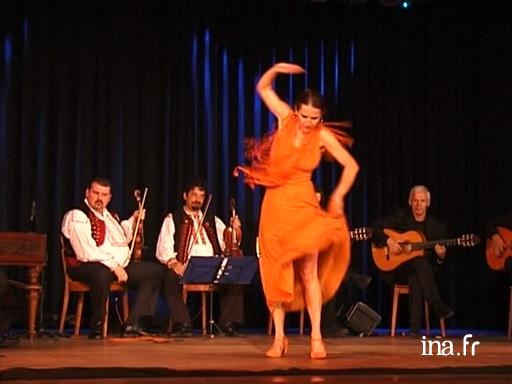Flamenco, the flame of Spain

Information
Report in Seville. The rebirth of traditional flamenco: an integral part of the culture of the Gypsies, which was banned under the dictatorship of Franco, experienced a revival before only recently becoming a commercial product. Commentary on the images by Paco Lira, owner of the tavern the Carbonería, Bettina Castano, dancer, and Felipe Luis Maestro, director of the International Flamenco fair.
Context
Flamenco and Franco
1975 was the date chosen by José Manuel Gamboa to start his story of a history of flamenco [1]. This date sealed the end of the Franco dictatorship in Spain with the death of the General. It coincided with two major commercial successes for flamenco, which at the time were unimaginable. They were two rumbas composed by two guitarists: Entre dos aguas from the L.P. Fuente y caudal by Paco de Lucia (1947-2014) and Caballo negro featured on the record Sanlúcar de Manolo Sanlúcar (born in 1943). The guitar helped push flamenco into the globalized age. In 1981, with the creation of the Paco de Lucía sextet, the guitar became the main «voice» of the flamenco instrumental ensemble, reducing Flamenco song and dance to an accompanying voice or a colour, but still leaving them a few solos.
On Saturday, 9th August 1975, singer Antonio Mairena (1909-1983) announced his professional retirement at the 14th Festival de Cante Jondo Antonio Mairena, founded in 1963, in his hometown Mairena del Alcor. Its approach known as mairenisme consisted in capitalising on old repertoires. He collected endangered styles from singers. He then included them in his impressive discography. This would allow them to be used again professionally. It was accompanied by a discourse that defended the Gypsy songs to the detriment of flamenco music, which he considered decadent.
This major rescue of the singing tradition - cante -was part of a wider movement calling for its revival. In 1950, a programme about flamenco, "Cantares de Andalucía" was aired on the Radio Nacional de Espana in Seville, thanks to the initiative of Rafael Belmonte, the brother of one of the masters of bullfighting, Juan Belmonte, remembers Claude Worms [2]. The initiative to bring back old repertoires swam against the current of the time which preferred popular flamenco repertoires designed to reach large audiences. It first affected the personalities involved on a cultural level. Among them was Paco Lira (1927-2015), who opened "La Cuadra" in Seville in 1956. Subjected to the pressure of Francoist censorship, he moved around several times before permanently settling in "La Carbonería. In the 1970s, he imposed a libertarian spirit, defending the concept of singing without having to make compromises, and which was open to new experiences of Andalusian rock. The time had come for many young artists to get involved in politics.
This approach to the concept of singing still persisted at the dawn of the new millennium, as evidenced by the career of the singer Gaspard de Utrera (1932-2008), as well as one of the trustees of the repertoires at the casa cantaora [3] for Los Perrates, accompanied by guitarist Nîmes Antonio Moya (born 1966), adoptive son of Utrera and a disciple of the guitarist Pedro Bacán.
With respect to dance, Mario Maya (1936-2008) and Antonio Gades (1936-2004) worked in a major way to ensure the transition to democracy, prefigured in their early works Ceremonial (1974) for the former and crónica del Suceso of Bodas de Sangre (1974) for the latter.
[1] Gamboa, José Manuel, Una Historia del flamenco, Madrid, Editorial Espasa Calpe, 2005, p. 19-103
[2] Worms, Claude, Seville: a history of cante. Record Seville, http://www.flamencoweb.fr > published online on 4 October, 2007.
[3] A casa cantaora can be compared to a natural conservatoire; it brings together amateur and professional singers, playing a key role in the teaching of flamenco within the Gypsy community in Lower Andalusia and beyond, it was aimed at professional artists looking for sources disseminated outside the showbusiness world and the record industry. Some of them were at the origin of family branches specialized in the art of dance on a professional basis, the toque -instrumental guitar playing.





